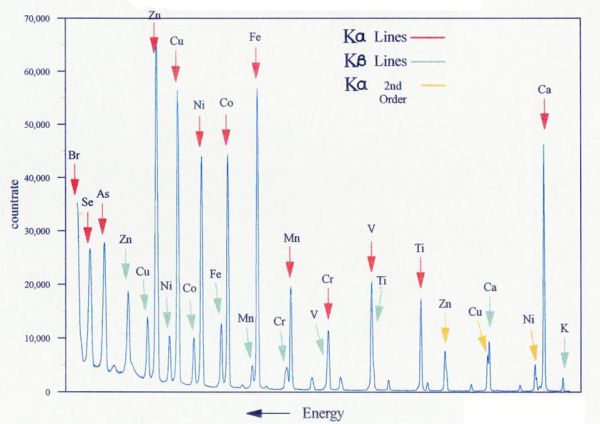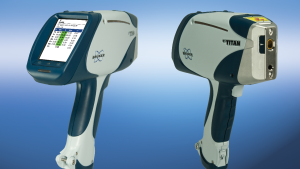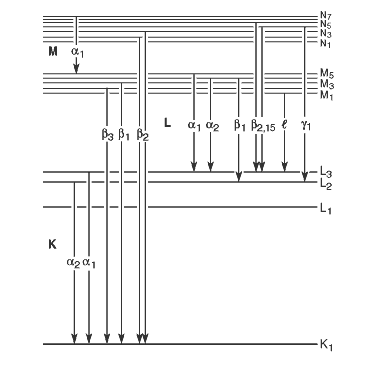Difference between revisions of "PXRF"
| Line 14: | Line 14: | ||
[[File:s1-titan-handheld-xrf.png|thumb|300px|none]] | [[File:s1-titan-handheld-xrf.png|thumb|300px|none]] | ||
| − | [[pxrf_Instrument_Operation| | + | [[pxrf_Instrument_Operation|Instrument Operation]] |
==Introductory Videos== | ==Introductory Videos== | ||
Latest revision as of 20:37, 16 February 2022
Monmouth College acquired a portable X-ray Fluorescence (pXRF) spectrometer thru a combination of LeSuer funding (~$20K) and a PittConn Grant (~$10K). The grant proposal can be found here.
Introduction
The technique of x-ray fluorescence (XRF) is outlined nicely on Wikipedia. The fundamentals are, you use high energy x-rays to eject core electrons from an element (Mg -> U) and when electrons in higher orbitals drop in to fill these once occupied orbitals, they emit/fluoresce lower energy x-rays which are then detected. The emission chart below is taken from Wikipedia and shows the emission frequencies for many element.
Safety
All users of the pXRF must watch the following radiation safety video: Bruker Titan S1 XRF safety training
Instrument
Our instrument is the Bruker Titan S1 - 800 portable/handheld XRF spectrometer. Below is a picture of our instrument:


